The industry of ship building and maintenance have been a part of Gdańsk since the earliest days of its settlement. However, it was the Imperial Shipyard of Gdańsk that was the foundation of the city's shipyard district as we know it today.
Gdańsk (or Danzig) was under Prussian rule from 1793 until 1918, with a brief interruption from Napoleon (1807-1814), and the city became the Prussian Empire's centre of navy infrastructure. In 1844, the Königliche Werft Danzig (The Royal Prussian Shipyard of Gdańsk) was founded in the area that now runs the length of ul. Narzędziowców, as well as additional infrastructure on the opposite side of the "Dead Vistula" river. When the various German states of Europe joined to become the German Empire in 1871, the operation was subsequently renamed to the Kaiserliche Werft Danzig (ENG: The Imperial Shipyard of Gdańsk).
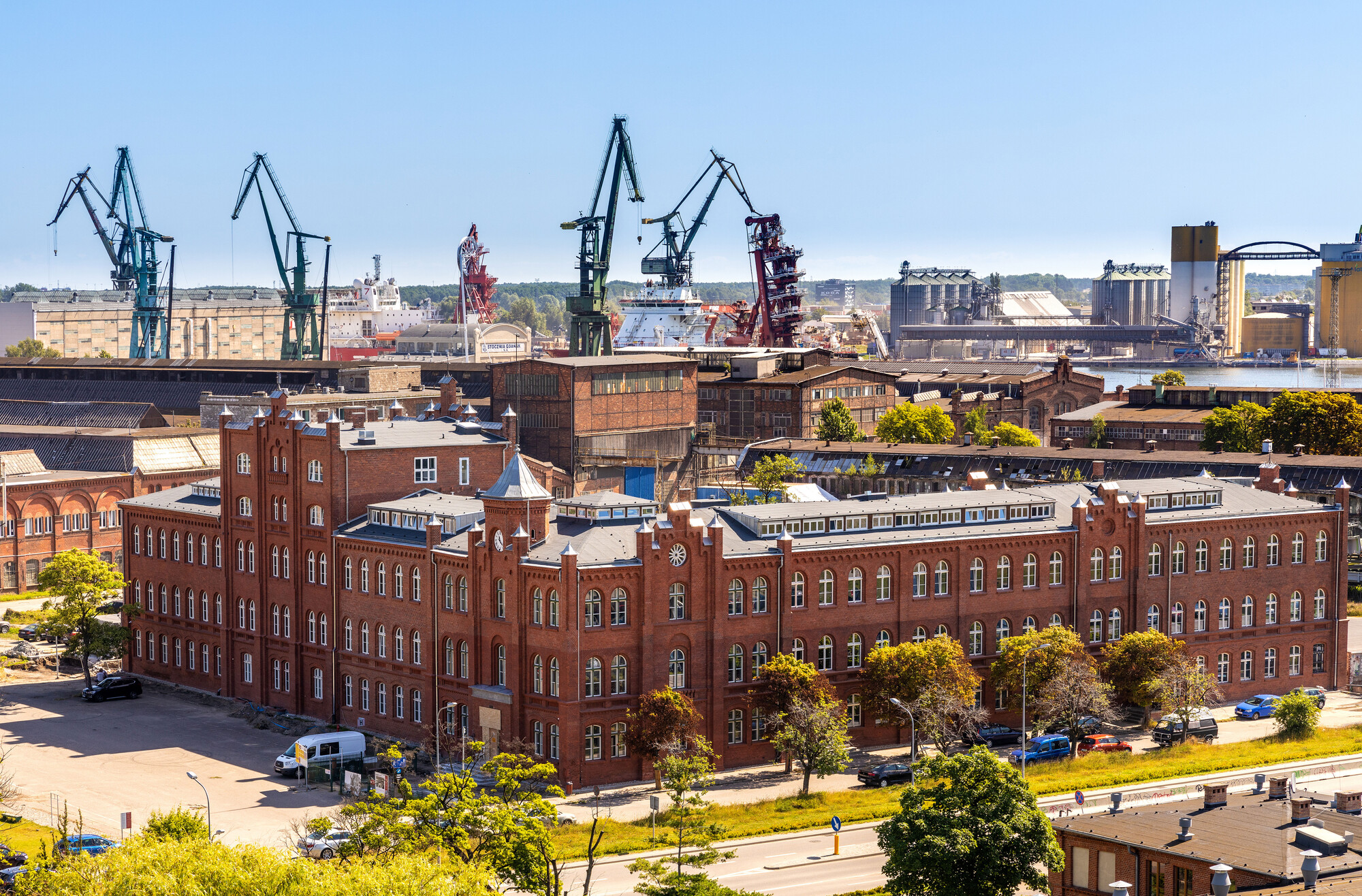
Expanding the operation, the Shipyard Directorate was built, and later fantastic-looking fire station. Much of the infrastructure along ul. Narzędziowców (ENG: Toomakers' Street) was first built here at the turn of the 19th/20th century. By the start of WWI, the Imperial Shipyard had become the largest shipyard in Europe. The new-and-improved dock basin had been built to allow for larger German warships to be produced here, however, the focus was mainly on smaller naval vessels, in particular U-boats. When Germany surrendered to the Allied Powers in 1918, workers were forced to scrap most of their U-boats, many of which had never seen action.
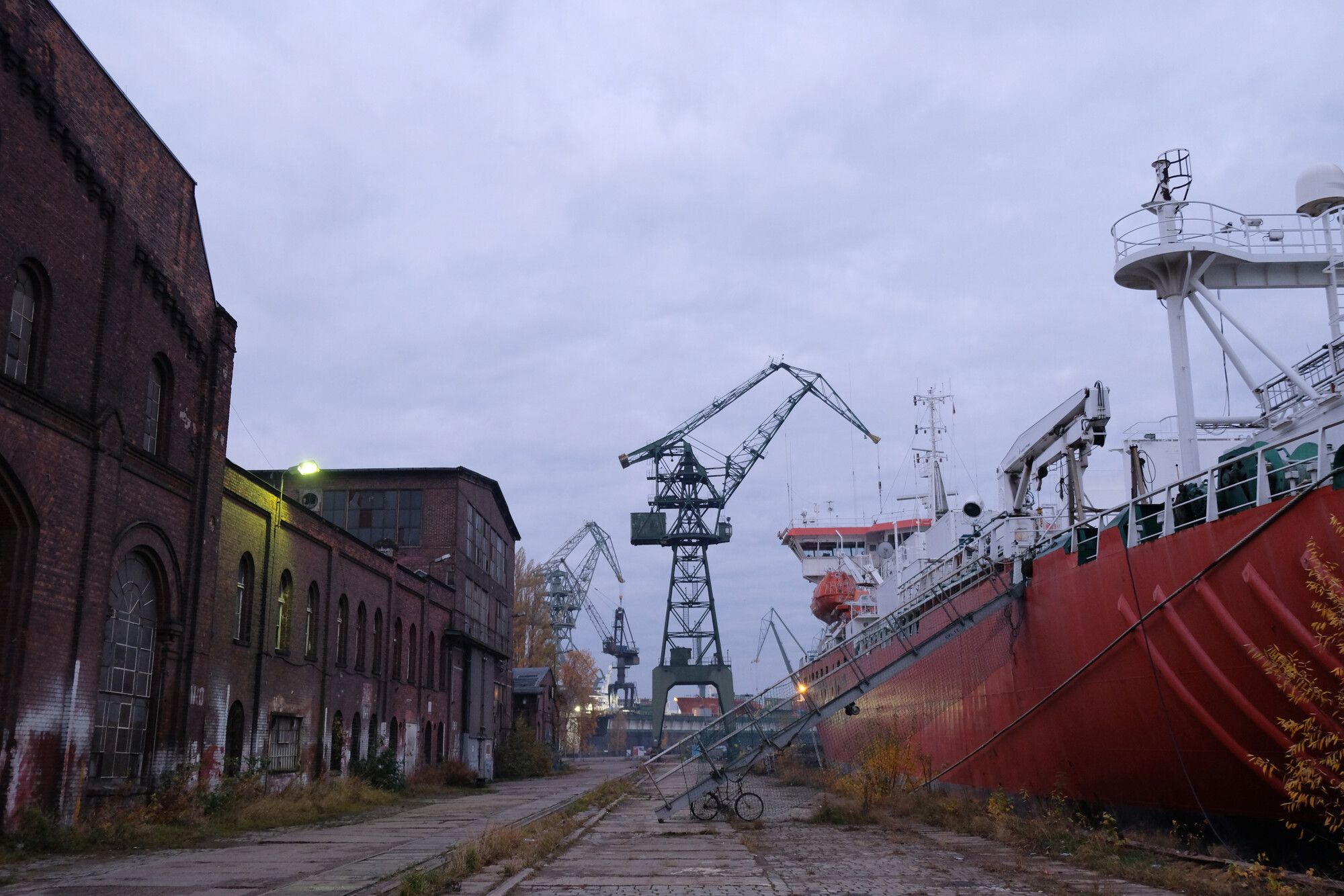
While Poland was able to regain independence in 1919, the Paris Peace Conference decided to make Danzig a self-autonomous city state - the Free City of Danzig. With that, the Imperial Shipyards reopened in 1919 as the Danziger Werft (ENG: Danzig Shipyard), producing small non-naval vessels over the next 20 years.
Danzig's contentious status was the motivation behind Adolf Hitler's invasion of both the free city state and neighbouring Poland, and the first military engagement of WWII began on 1st September 1939 with the German shelling of the Polish-controlled military depot on Westerplatte. The short-lived 'free city' became a part of the Third Reich and the Danzig Shipyard became a naval production centre once again. U-Boats, specifically the Type VII, were assembled in nearby Montownia, which is now a post-industrial food hall and luxury apartment building.
In March 1945, the Soviet Red Army 'liberated' Danzig again, which saw the city become Polish (and thus known as 'Gdańsk') once again. The shipyard was heavily bombed and later purged of its most valuable infrastructure. Eventually, the Communist Polish government took over both the now-former Danzig Shipyard and merged it with the nearby Schichau-Werke, another shipbuilding company owned by an engineering works from nearby Elbląg. This state-owned entity was renamed the Vladimir Lenin Shipyard of Gdańsk. Whilst cranes and other impressive infrastructure rose into the city skyline, the area still referred to unofficially as the 'Imperial Shipyard' remained as the heart of the operation, producing ship engines. It is against this backdrop that growing discontent would see the rise of 'Solidarity', a shipbuilders trade union that would grow to become a nationwide movement in the 1980s.
Read more about the Solidarity Movement in Gdańsk!
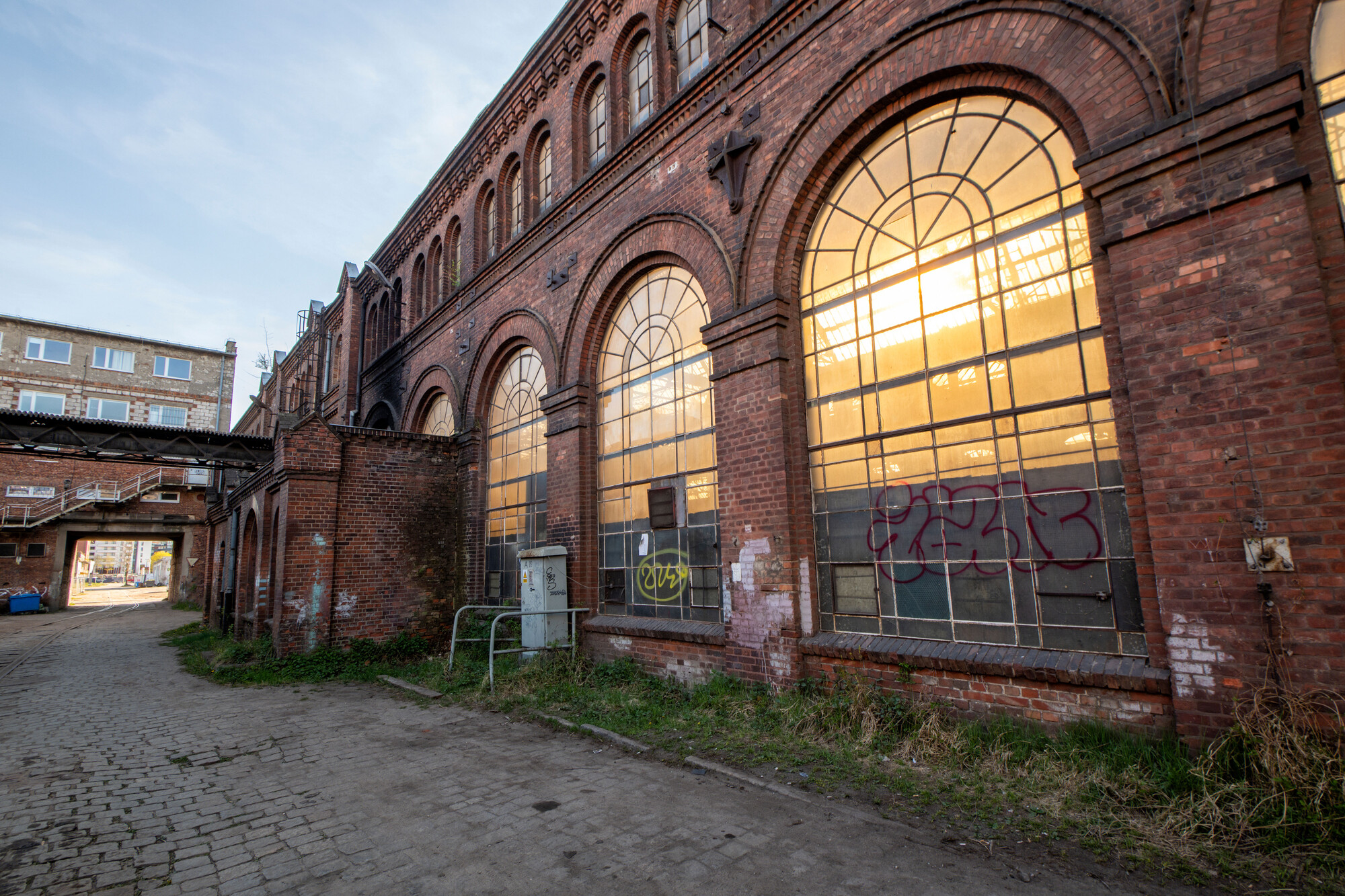
What to see in the Imperial Shipyard of Gdańsk?
Closed to the public for decades, the area known as Stocznia Cesarska (ENG: Imperial Shipyard) is now accessible to the public! Signage with maps and its various numbered points denotes the various sites that you can visit, and some you can even enter (at least partially). Amazingly, sites such as the locksmith building and the nearby berthing dock are literally in the centre of shipbuilding activity and you may feel like you are trespassing (don't worry, you're not!). The riverside M3 crane offers fantastic panoramic views of the surrounding area in the summertime!In addition to this self-guided walking route, there are a number of spaces that have been made available for art production and exhibition. One of the most notable is WL4 Art Space, which is both a workshop and exhibition inside a building with the historic nickname of Mleczny Piotrek (ENG: Milky Peter).
For food, you can go for something fancy in Mielżyński Wine Spirits Specialties or something super budget around the corner at Bar '80dziesiątka' , a shipworkers' lunch bar that has maintained its 80's decor. For something in between and with more variety, head over to Montownia Food Hall.
If you're not able to visit Gdańsk any time soon, you can take a digital birdseye tour of the area on the Stocznia Cesarska website!


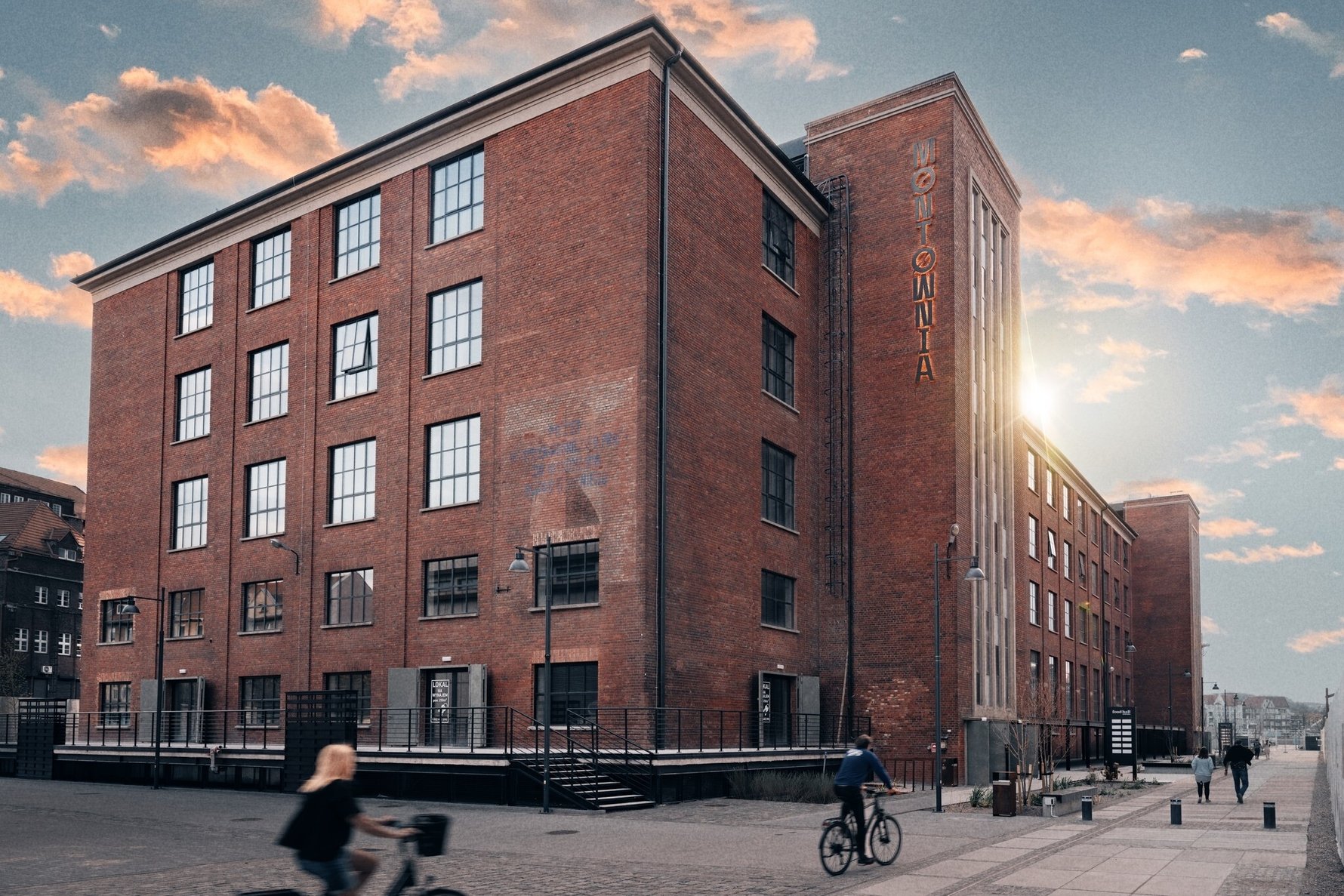
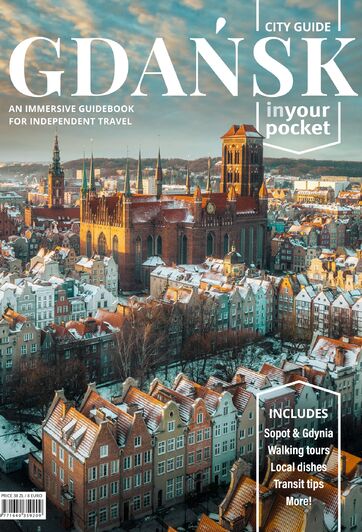


Comments